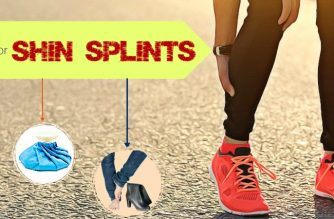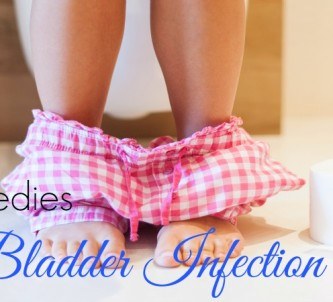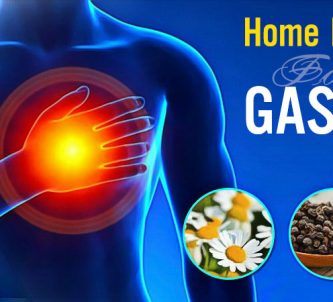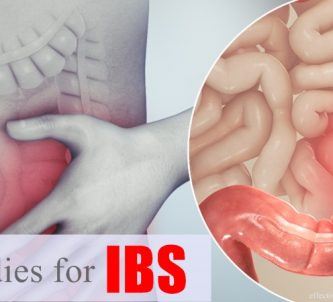In This Article
Shin splints may be relatively common but they’re one of the most painful musculoskeletal conditions a person can experience. Characterized by extreme tenderness, swelling and pain in the lower portion of the leg, shin splints are generally the cause of a biomechanical irregularity. Fortunately, they can usually be treated in the comfort of your own home.
- Top 18 Natural Home Remedies For Knee Pain And Swelling
- Top 7 Natural Home Remedies For Restless Leg Syndrome In Adults
- 26 Effective Home Remedies For Arthritis Pain Relief In Neck, Hands, & Feet
- Top 40 Natural Home Remedies For Carpal Tunnel Syndrome In Wrist
Top 5 Effective Home Remedies to Treat Shin Splints
I. What Are Shin Splints?
According to researchers at the Mayo Clinic, shin splints, or tibial stress syndrome as they are sometimes referred, are the result of prolonged stress on a person’s leg muscles, bone tissues and tendons.
While shin splints are most prevalent among athletes, dancers and military recruits, those who participate in strenuous physical activity are at risk as well. In fact, anyone who places repetitive stress on the shinbone and/or connective tissues associated with it will likely experience a shin splint eventually.
II. The Risk Factors
It’s important to note the various shin splint risk factors so you can prevent pain and injury. Physicians and chiropractors deal with shin splints quite often and list at least 5 behaviors/habits/physical characteristics that often contribute to the development of shin splints. They are as follows:
- Running (especially long distances)
- A sudden increase in the frequency, intensity or duration of your workout routine
- Standing, walking or running over rough terrain or hard surfaces
- Flat or high-arched feet
- Intense training without prior experience
In addition to the risk factors mentioned above, wearing improper shoes, having bad posture or having weak muscles can contribute to the development of shin splints. Regular physical activity, balanced nutrition and routine chiropractic adjustments may reduce risk factors for some people.
If you or someone you know is actively engaging in high-stress physical activity wherein their feet and/or legs are being subjected to extreme stress, be on the look out for common shin splint symptoms. If things become too unmanageable, seek help from a doctor or chiropractor immediately. Untreated shin splints can become a very serious problem.
EffectiveRemedies Partner Solutions

Ask a Doctor Online and Get Answers in Minutes, Anytime!
Have medical questions? Keep asking questions to a Verified Expert until you get the answer you need.
III. The Main Symptoms
Getting help with your leg pain as soon as possible is vital to your overall health. Fortunately, it won’t be difficult for you to recognize a shin splint because it is typically accompanied by the following symptoms:
- Pain
- Tenderness to the touch
- Swelling
- Redness
In some cases, extreme pain and swelling can lead to a bone fracture or skin discoloration (redness). Rarely, however, redness of the skin is found on the inside of the lower leg. Any pain accompanied by severe redness should be looked at right away.
IV. Home Remedies
While doctors, physical trainers and chiropractors can usually help prevent shin splints or manage the symptoms thereof, a few self-care measures can be used at home to accomplish the same level of relief. The following home remedies should be considered carefully and only used by those who do not need to see a medical professional.
Meanwhile, be sure to know the signs that your shin splint has healed. Those signs include:
- You regain your complete range of motion and/or flexibility without experiencing pain.
- The strength in your injured leg returns.
- The areas which used to be tender to the touch are no longer painful.
- Any swelling has gone down significantly.
- Your skin is no longer red or discolored.
- You can walk, jog or run without any discomfort.
If your injury is not yet healed, it’s time to start trying a few proven treatments. Below are the top 5 self-care home remedies to treat shin splints without ever sitting in a doctor’s office:
1. Take Medication to Manage the Pain
While pain medication basically just masks your discomfort, the responsible and moderate use of medicine to treat shin splints is completely acceptable. Considering the fact that minor shin splints typically heal themselves over time, a small dose of pain medication may help.
The best medications for shin splints typically include but are not limited to the following over-the-counter products:
- Ibuprofen
Also known as Naproxen, this anti-inflammatory medication not only reduces swelling but also alleviates pain quickly and without negative side effects for most people.
- Analgesics
This includes non-anti-inflammatory pain relievers such as Tylenol, Advil or Aspirin (acetaminophen).
- Herbs and Herbal Supplements
Some herbs have healing and/or anti-inflammatory properties that make them an ideal alternative to over-the-counter pain medications.
Remember, you should only use medication as part of your shin splint self-care routine if the condition is not serious. Furthermore, try not to forget that your pain is caused by stress to your leg(s). Even if the medication helps you feel no pain, do not mistake that for a license to overly exert your body.
2. Apply Some Ice to the Injury
If medication isn’t your thing but neither is pain, try applying some ice to your lower leg/shin. Ice is a natural anti-inflammatory, plus using it instead of medication means dealing with zero side effects. On top of that, ice can significantly reduce pain if it’s applied for at least 10-15 minutes.
Using ice to relieve pain is a method that’s been respected for a very long time. It even has a name: cryotherapy. Because inflammation and subsequent pain is the body’s natural response to tissue damage, and because ice combats both of those things in a holistic way, applying ice to your shin splints may provide immediate relief.
TIP: For best results, apply ice packs to your shin splints 3-4 times per day for about 20-30 minutes.
3. Wear the Right Shoes
The kind of footwear you choose for each activity you participate in is perhaps more important than you realize. Recent studies have found a very strong link between a person’s shoes and his or her risk of experiencing back pain. As you may already know, chronic back pain can contribute to poor posture, increased stress on muscles and bones and, of course, shin splints.
Although pains and strains in your back is only the first sign that your footwear is incorrect, managing back pain by wearing is a great way to prevent subsequent injury. Especially for those whose risk of developing shin splints is increased because of regular strenuous activity, the right shoes make all the difference.
4. Stretch It Out
Gentle stretching does a body good, especially one that’s susceptible to shin splints. Scientists have confirmed that proper stretches provide the following benefits to a person’s health:
- It can make your movements more fluid.
- It can enhance your athletic performances.
- It can reduce your risk of getting hurt.
- It can decrease post-workout pain and stiffness.
Because static stretching produces mixed results, it may be best to get assistance from a chiropractor or physical therapist instead of attempting to stretch your muscles at home. Incorrect stretching can, unfortunately, lead to injury. However, gentle stretching is also completely safe, plus it increases blood flow, feels terrific and improves flexibility.
Better flexibility may thereby result in the following health benefits:
- Reduced chance of straining muscles, joints and tendon
- Increased range of motion
- Improved physical ability, performance and endurance
- Decreased risk of developing sprains and shin splints
Stretching is not only inexpensive but it’s also easy to do. If you’re not confident about performing proper stretching exercises, seek help from a musculoskeletal expert before experimenting with your body.
5. Don’t Overdo It
The best way to prevent shin splints altogether is to avoid over-exerting yourself on a regular basis. While it’s often recommended for athletes to “push the envelope” to improve performance, such habits should be done in moderation. Furthermore, everyone should give themselves plenty of time to rest between activities.
Moreover, shin splints are both prevented and treated by avoiding activities that cause you physical pain or produce swelling, especially if that pain and/or swelling are concentrated in the lower portion of your leg. If you must continue the activity, wrap adhesive tape around your leg or ankle to help support the muscles, bones and tendons. Practice cross-training exercises to improve your endurance.
V. TIPS:
To prevent overexertion on your lower extremities and back during your workout routine:
- Increase your flexibility
- Know your limits
- Support your bones and muscles with a nutritious diet.
VI. SPECIAL CONSIDERATIONS
Be sure you know when to contact a doctor or chiropractor for shin splint prevention or treatment. Make an appointment if medication, ice, proper shoes, stretching or rest don’t ease your pain. Follow any instructions given to you by the medical professional examining or treating your shin splints.
In the meantime, analyze your habits and lifestyle to find out where precautions can be most easily made. Below are 5 ways that can reduce your risk immediately:
- Consider adding arch supports or shock-absorbing insoles to your shoes.
- Incorporate low-impact core strengthening exercises to your workout.
- Have regular chiropractic alignments to keep your body in peak physical condition.
- Avoid high-impact sports and activities.
- Start out slowly with new activities, increasing intensity and duration gradually.
To get more information, visit our Home Remedies page.
AUTHORITY SOURCES:
https://www.mayoclinic.org/diseases-conditions/shin-splints/symptoms-causes/syc-20354105
https://www.webmd.com/fitness-exercise/shin-splints#1
https://medlineplus.gov/ency/patientinstructions/000654.htm
https://www.healthline.com/health/chronic-pain/treating-pain-with-heat-and-cold
https://www.mayoclinic.org/healthy-lifestyle/fitness/in-depth/stretching/art-20047931
Bio Contributor: Dr. Brent Wells, D.C. is graduate of the University of Nevada and Western States Chiropractic College in Portland, Oregon. As the founder of Better Health Chiropractic in Juneau, Dr. Wells is highly respected in his field as one of the state’s premier chiropractors. He specializes in rehabilitative therapies which include acupressure, chiropractic massage, adjustments and natural pain relief at his multi-disciplinary clinic.








